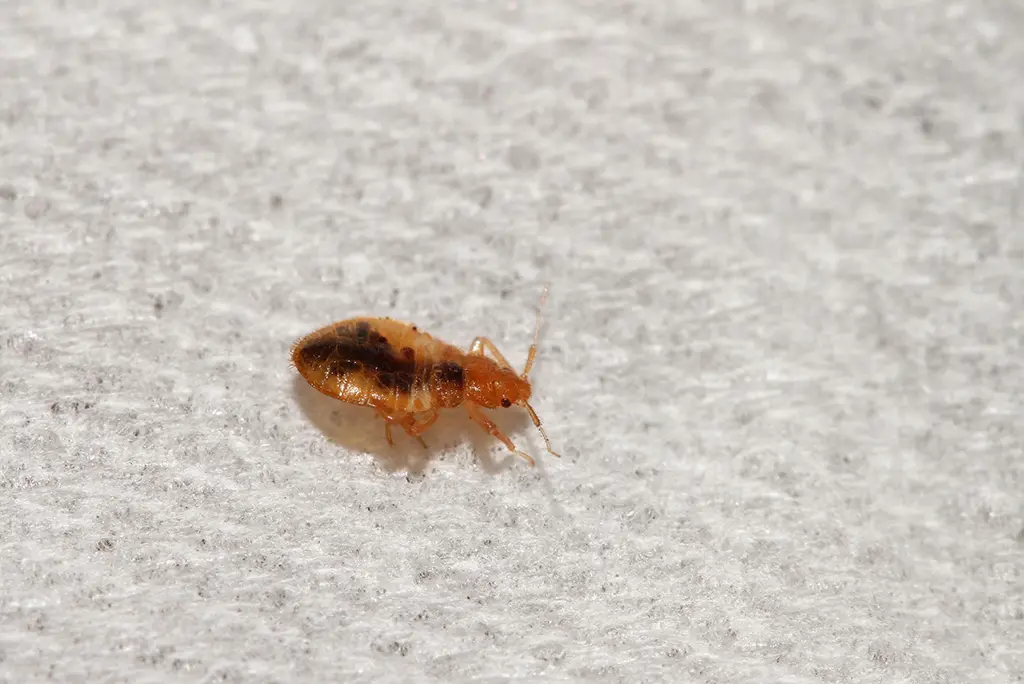Bed Bugs
Get a free estimate

Bed Bugs
Bed Bugs
Bed bugs are small, reddish-brown parasitic insects that belong to the family Cimicidae. They are wingless and feed on the blood of humans and other warm-blooded animals, typically at night when their hosts are sleeping. Bed bugs are mentioned in medieval European texts and classical Greek writings back to the time of Aristotle.
Adult bed bugs are about 3/16-inch long and reddish-brown, with oval, flattened bodies. The coloration of bed bugs is similar to an apple seed although their size is closer to a lentil. Sometimes they are mistaken for ticks, cockroaches, carpet beetles, or other household insects. Immature bed bugs (nymphs) resemble adults but are smaller and lighter in color. Bed bugs don’t fly, or jump like fleas, but can crawl rapidly over floors, walls, ceilings, and other surfaces.
They are excellent hiders and are known for their ability to hide in cracks, crevices, and other tight spaces. They are commonly found in and around areas where people sleep or rest, such as beds, mattresses, box springs, bed frames, headboards, and upholstered furniture. They can also hide in wall cracks, baseboards, electrical outlets, and even in luggage or clothing.
The Bed bug is a nocturnal pests, meaning they are most active at night. They feed exclusively on the blood of humans and warm-blooded animals. They use their specialized mouthparts to pierce the skin and withdraw blood. After feeding, they return to their hiding places. Bed bug bites can cause itchy, red welts on the skin, and different individuals may react differently to the bites.
Resilience is a trait of these bugs. Nymphs and adults can persist months without feeding which is unusual for most insects. The ability to survive without a blood meal is longer at cooler temperatures. Potentially up to a year or longer at 55°F or less. In temperature-controlled buildings, a more typical duration without feeding is about 1 to 4 months. Consequently, it is usually impractical to leave homes unoccupied in hopes of ‘starving’ an infestation. When infested dwellings such as apartments are vacant, bed bugs often disperse to nearby units or reduce their activity until the unit is reoccupied.
Treatments often require multiple visits from the pest control professionals to ensure that all stages of the infestation (eggs, nymphs, adults) are dealt with. Regular monitoring and inspection are important to catch any potential re-infestations early.
Remember that prevention is key when it comes to the bed bug. When you are traveling, it is wise to inspect hotel rooms for signs of bed bugs, and take precautions when purchasing any used furniture or clothing. If you suspect a bed bug infestation, it’s best to consult with a licensed pest control professional to address the issue effectively and safely.
Dealing with a bed bug infestation requires a comprehensive approach involving both chemical and non-chemical methods. It’s important to note that effective bed bug control usually requires professional intervention, especially for severe infestations. Insecticides specifically designed for bed bug control may be used. Professionals use a combination of residual sprays, dusts, and other treatments to target bed bugs in various life stages. These treatments need to be applied by trained pest control experts to ensure effectiveness and safety.
It’s important to note that DIY treatments for bed bugs are often not as effective as professional interventions. Bed bugs are notoriously difficult to eliminate, and their resistance to some pesticides makes it even more challenging. If you suspect a bed bug infestation, it’s recommended to consult with a licensed pest control professional to develop an effective and safe eradication plan.


